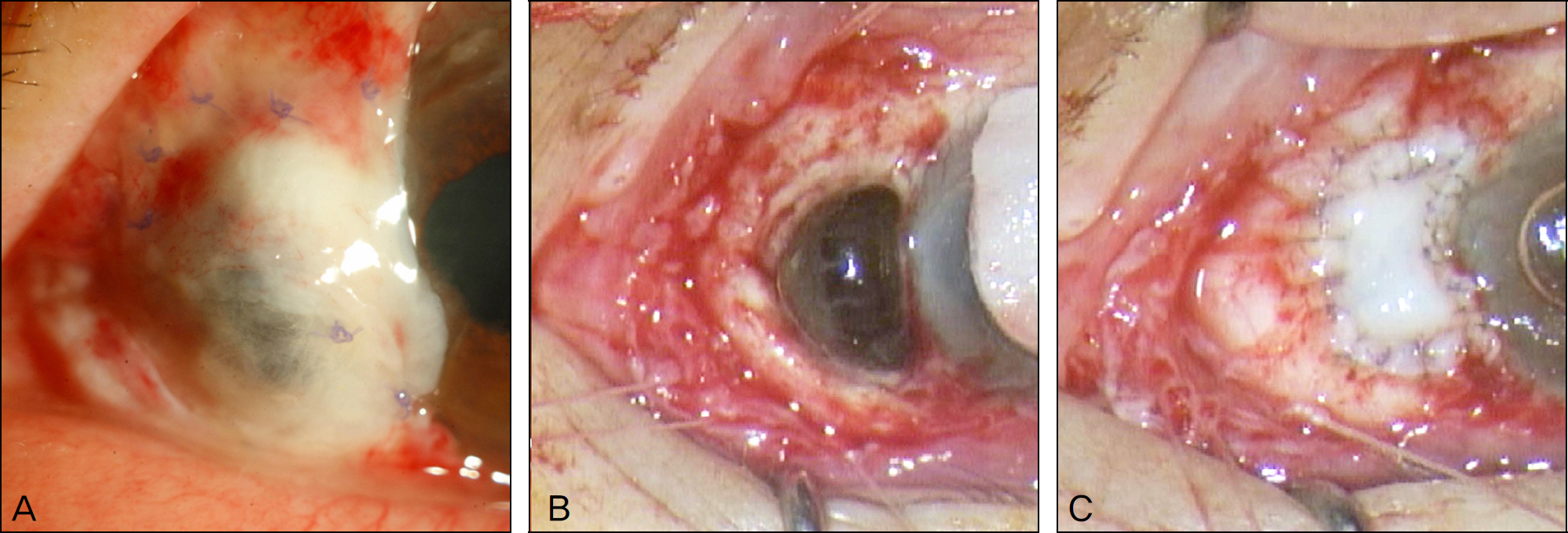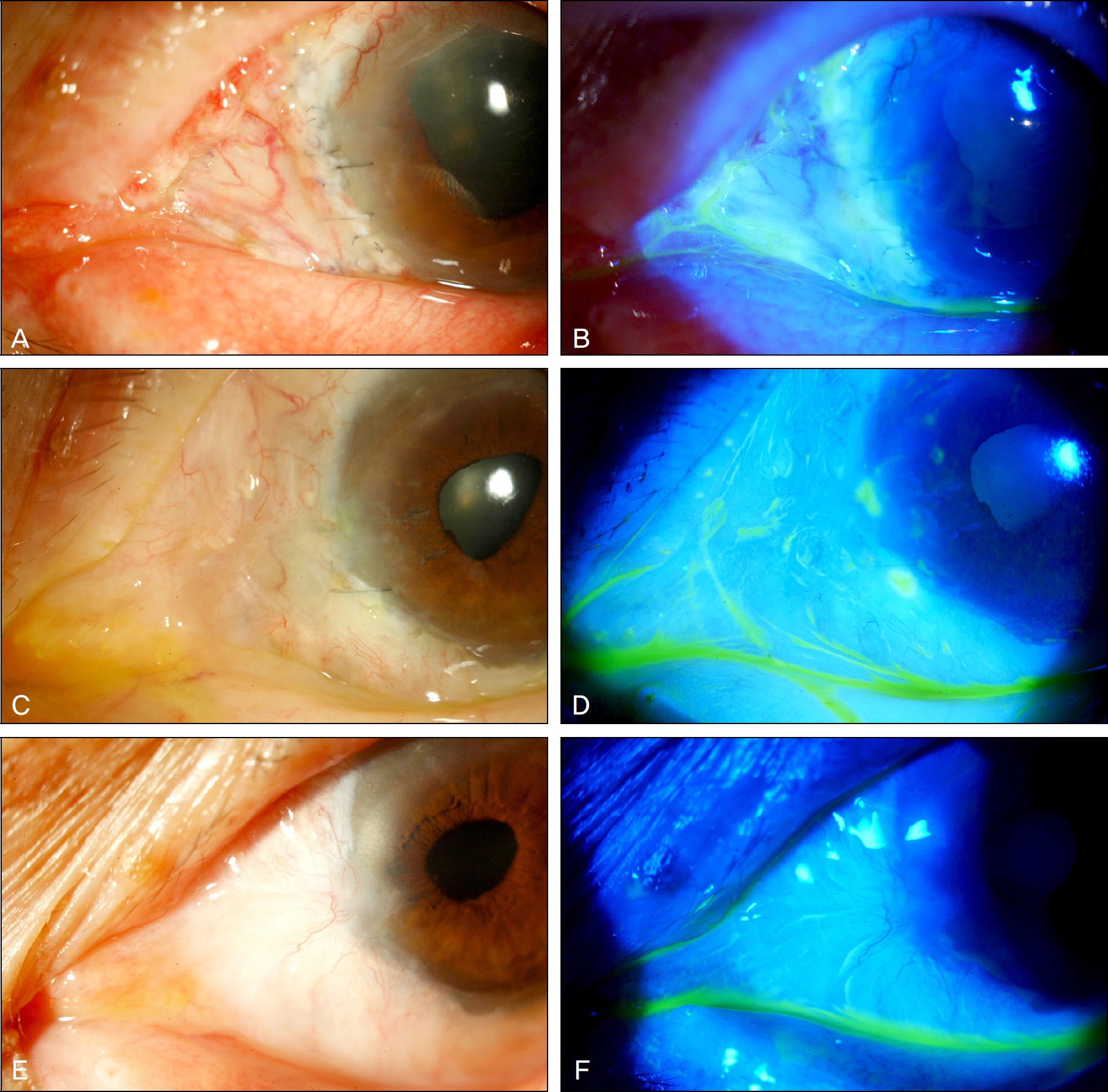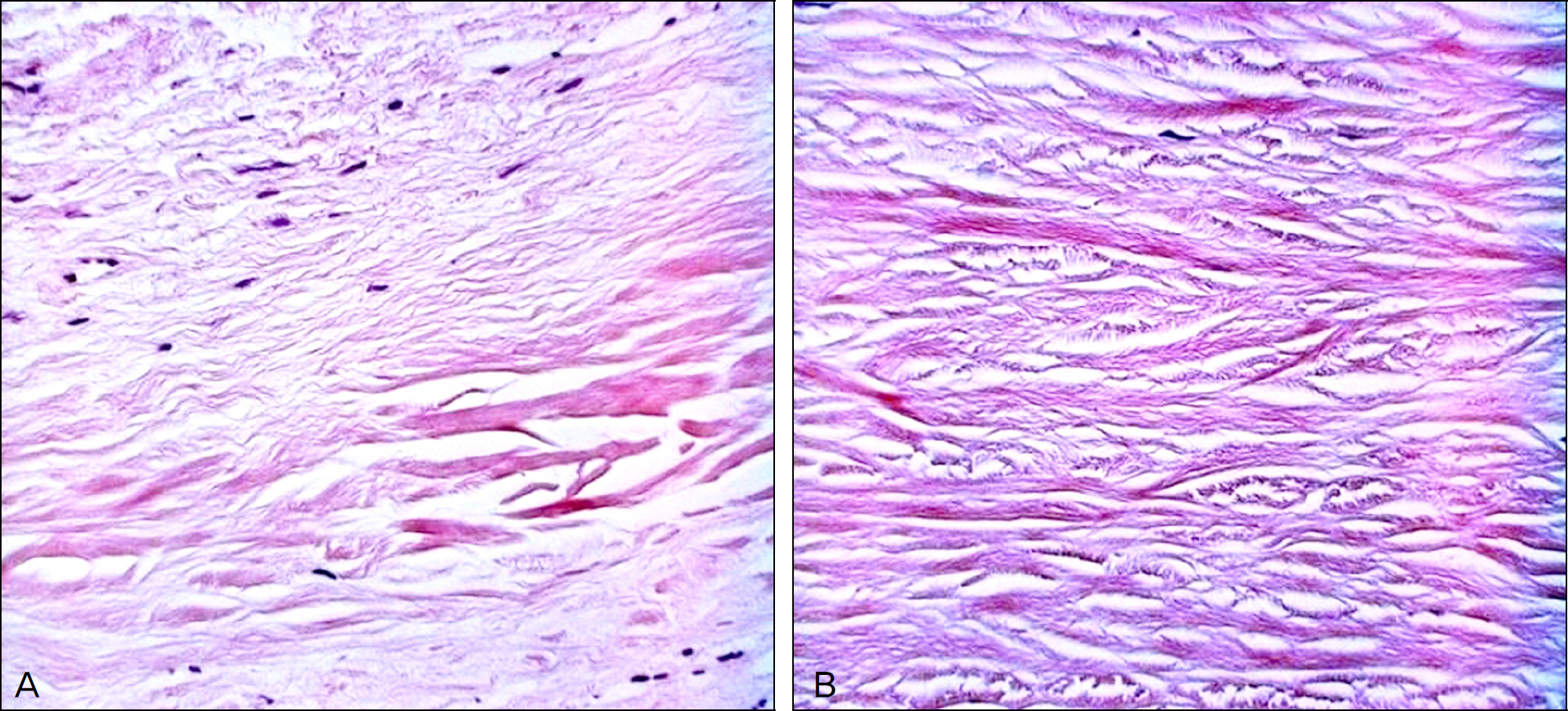J Korean Ophthalmol Soc.
2011 Oct;52(10):1227-1231. 10.3341/jkos.2011.52.10.1227.
Ocular Reconstruction Using Autologous Tragal Perichondrium for a Refractory Necrotizing Scleral Perforation: A Case Report
- Affiliations
-
- 1Department of Ophthalmology, Chung-Ang University College of Medicine, Seoul, Korea. jck50ey@kornet.net
- 2Department of Ophthalmology, Seoul National University College of Medicine, Seoul, Korea.
- KMID: 2215007
- DOI: http://doi.org/10.3341/jkos.2011.52.10.1227
Abstract
- PURPOSE
To report the effectiveness of an autologous tragal perichondrium graft for a necrotizing scleritis case which was refractory to conventional surgery.
CASE SUMMARY
A 75-year-old woman was referred to our clinic with recurrent necrotizing scleritis of the left eye which occurred after pterygium removal five years earlier. The patient underwent scleral graft, pericardium graft, and amniotic membrane graft in other clinics; however, necrosis of the sclera progressed. The best corrected visual acuity was 0.06, and choroidal tissue was nearly exposed below the melted pericardium graft in the nasal area. The authors harvested tragal perichondrium from the right ear, and the scleral defect was successfully reconstructed with an autologous tragal perichondium graft. The graft showed rapid epithelization and neovascularization within a week and conjunctivalization after three months. No complications have been observed up to one year after surgery.
CONCLUSIONS
Autologous tragal perichondrium graft is an effective treatment to alter necrotized sclera via neovascularization and rapid epithelization in refractory necrotizing scleritis cases.
MeSH Terms
Figure
Cited by 1 articles
-
Efficacy of Autologous Tragal Perichondrium Graft after Proper Antifungal Treatment in Fungal Necrotizing Scleritis
Jun Hyung Moon, Jae Chan Kim
J Korean Ophthalmol Soc. 2013;54(12):1929-1934. doi: 10.3341/jkos.2013.54.12.1929.
Reference
-
References
1. O'Donoghue E, Lightman S, Tuft S, Watson P. Surgically induced necrotising sclerokeratitis (SINS) – precipitating factors and response to treatment. Br J Ophthalmol. 1992; 76:17–21.2. Kim JH. Scleral grafting on necrotic scleritis following pterygium excision. J Korean Ophthalmol Soc. 1982; 23:29–39.3. Na YS, Joo MJ, Kim JH. Results of scleral allografting on scleral necrosis following pterygium excision. J Korean Ophthalmol Soc. 2005; 46:402–9.4. Ahn BH, Lee EJ, Sung KH. The use of a temporal muscle fascia in the treatment of scleral defect. J Korean Ophthalmol Soc. 1983; 24:785–91.5. Gwag J-Y, Jang HG. Autogenous temporalis fascia grafting and conjunctival flap transposition in scleromalacia after pterygium excision. J Korean Ophthalmol Soc. 2004; 45:180–6.6. Lee CO, Jong SH, Lee JJ. Autologous simple conjunctival graft and conjunctiva / tenon graft on focal scleromalacia. J Korean Ophthalmol Soc. 1997; 38:1737–41.7. Mauriello JA Jr, Fiore PM, Pokorny KS, Cinotti DJ. Use of split-thickness dermal graft in the surgical treatment of corneal and scleral defects. Am J Ophthalmol. 1988; 105:244–7.
Article8. Cavaliere M, Mottola G, Rondinelli M, Iemma M. Tragal cartilage in tympanoplasty: anatomic and functional results in 306 cases. Acta Otorhinolaryngol Ital. 2009; 29:27–32.9. Yoon CH, Kim NJ, Lee MJ, et al. Correction of lower lid retraction using autologous ear cartilage graft. J Korean Ophthalmol Soc. 2011; 52:136–40.
Article10. Nigro MV, Friedhofer H, Natalino RJ, Ferreira MC. Comparative analysis of the influence of perichondrium on conjunctival epithelialization on conchal cartilage grafts in eyelid reconstruction: experimental study in rabbits. Plast Reconstr Surg. 2009; 123:55–63.
Article11. Hayasaka S, Noda S, Yamamoto Y, Setogawa T. Postoperative instillation of Mitomycin C in the treatment of recurrent pterygium. Ophthalmic Surg. 1989; 20:580–3.
Article12. Galanopoulos A, Snibson G, O'Day J. Necrotising anterior scleritis after pterygium surgery. Aust NZ J Ophthalmol. 1994; 22:167–73.
Article13. Tarr KH, Constable IJ. Late complications of pterygium treatment. Br J Ophthalmol. 1980; 64:496–505.
Article14. Rubinfeld RS, Pfister RR, Stein RM, et al. Serious complications of topical Mitomycin-C after pterygium surgery. Ophthalmology. 1992; 99:1647–54.
Article15. Aronson SB, Elliott JH. Ocular Inflammation. 1st ed.St. Louis: Mosby;1972. p. 210.16. Jeoung JW, Yoon YM, Lee JL, et al. The effect of amniotic membrane transplantation on the treatment of necrotizing scleritis after pterygium excision. J Korean Ophthalmol Soc. 2004; 45:1981–8.17. Madsen K, von der Mark K, van Menxel M, Friberg U. Analysis of collagen types synthesized by rabbit ear cartilage chondrocytes in vivo and in vitro. Biochem J. 1984; 221:189–96.
Article18. Togo T, Utani A, Naitoh M, et al. Identification of cartilage progenitor cells in the adult ear perichondrium: utilization for cartilage reconstruction. Lab Invest. 2006; 86:445–57.
Article
- Full Text Links
- Actions
-
Cited
- CITED
-
- Close
- Share
- Similar articles
-
- Efficacy of Autologous Tragal Perichondrium Graft after Proper Antifungal Treatment in Fungal Necrotizing Scleritis
- A Case of Autologous Tragal Perichondrium Graft in a Patient with Mooren's Ulcer
- Autologous Tragal Perichondrium Transplantation: A Novel Approach for the Management of Painful Bullous Keratopathy
- Simultaneous Four-site Restoration of Bilateral Scleromalacia Using Autologous Tragal Perichondrium and Preserved Sclera
- Use of Autologous Tenon's Capsule Graft for Repair of Traumatic Scleral Perforation




